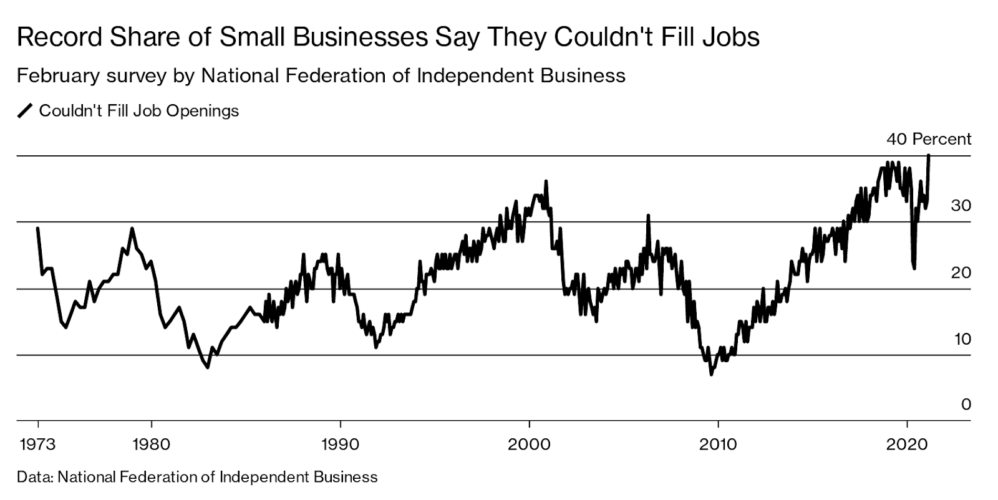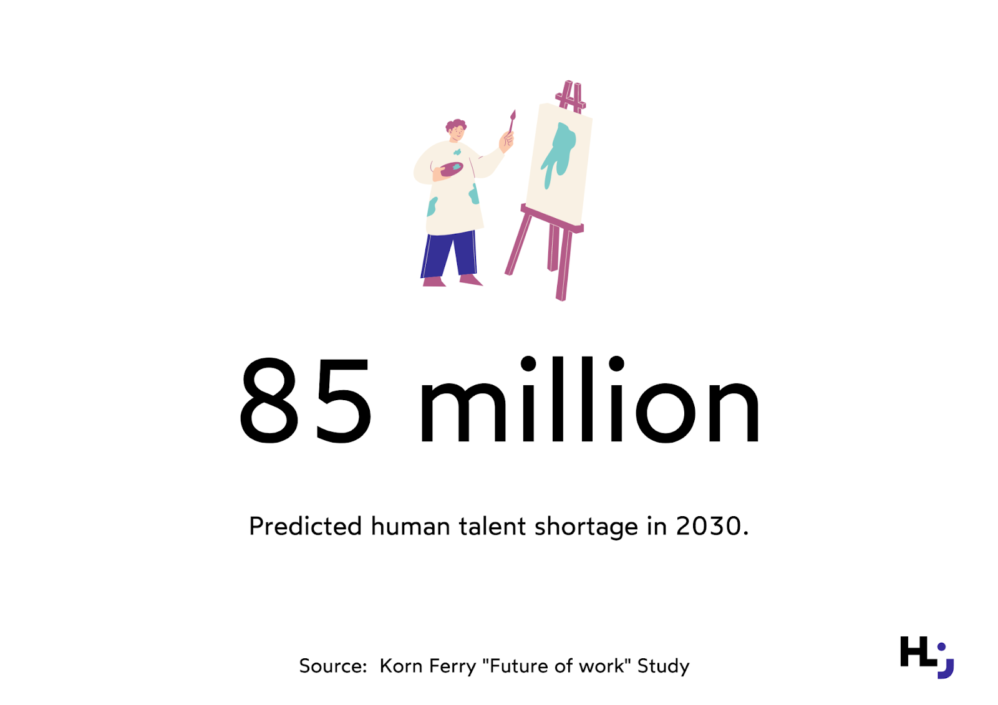How to fill hard-to-fill positions?

Finding new employees and filling hard-to-fill positions has never been more challenging for global employers. Here’s what you can do to succeed.
It’s arguably one of the most cited statistics of the year: the Korn Ferry study found that by 2030 (1), there will be a global talent shortage of more than 85 million people, resulting in approximately $8.5 trillion in unrealized annual revenue.
The foreshadowing of this talent gap is already evident as employers are struggling to fill hard-to-fill positions.
Last March, the U.S. National Federation of Independent Business reported that 40% of small businesses admitted they had jobs they couldn’t fill. It was the highest percentage in the history of the data series, which dates back to 1974. In addition, the Bureau of Labor Statistics announced that there were 6.9 million unfilled jobs in the U.S. market, which was well above average.

Which jobs are hard to fill?
We can see the staffing shortage in two main areas. The first is a large gap created by the pandemics in services that cannot be performed online, such as catering and cleaning businesses.
Some of the employees who used to fill these jobs – students, teenagers, and seasonal workers – left the abandoned city centers and moved to suburbs or smaller towns. Many of them reskilled during the lengthy closures and joined the ranks of the remote workforce.

At the other end of the talent shortage spectrum are jobs that require highly skilled and experienced specialists. Data from the U.K. (2) shows that the hardest jobs to fill are:
- Optometrist
- Lawyer
- Software engineer
- Software architect
- Front-end developer
- Systems engineer
- Flight attendant
- Software test engineer
- Full-stack developer
“Here, the gap results from the global talent shortage and a very competitive market that has become a worker’s market. Candidates become customers to be attracted to a job by the prospective employer, sometimes with pure marketing tactics,” comments Daniel Aduszkiewicz, the CEO and co-founder of Human Panel.
Valuable strategies for filling hard-to-fill positions
Take a data-driven approach
First, you need to look inward and understand your needs: who you are looking for and what specific skills are required for a particular position. This data-driven approach will help you narrow down expectations and consequently enlarge the pool of potential employees.
Data will also show you where your top talent is coming from, giving you an additional clue about where to look. You may already have a solid framework of candidates in your organization – the only thing you need is to train them. But if you want to learn the sources of your top players, and track other HR metrics such as time to hire, cost per hire, and quality of hire, sign up to our free demo and see people analytics in action!
Ready to start people analytics with Human Panel?
Use an employee referral program
The employee referral program can be a very successful tactic and a powerful source of talent from your employees’ existing networks. In 2016, more than 30 percent of all hires were made through employee referrals. (3)
Referrals can be helpful when recruiting for hard-to-fill positions in the IT department. Your employees can act as part-time recruiters and help you gain a deeper understanding of the candidate’s skills and profile.
Consider offering a bonus for people who refer strong candidates.

Develop your talent
If you’re having trouble filling hard-to-fill positions, consider whether your company can offer a development or training program for future talent. Many organizations hire people right out of school and then train them. By instituting a culture of continuous learning and training, they fill the gap in needed skills.
This approach is worth considering if the job doesn’t require a lot of experience and if you’re not looking for someone who would work independently from day one.
Specify your requirements
When posting a job ad, use natural language to describe the responsibilities and duties. Be precise – instead of writing that the job involves “customer service,” try to explain what a typical day might look like for this person.
When choosing a job, people often imagine themselves doing it. So try to be as down-to-earth as possible, rather than paint a general and superficial picture.
Sell your jobs as products
Address your potential candidates as if they were your customers. Define your “target audience” and choose the right generational approach. Promote your company through its values and benefits.
To acquire rare talent today, you need to compete not only on compensation but also on being a great workplace. A fabulous atmosphere, exciting projects, and benefits are at least as significant as the salary itself.
Wrap-up
With the global talent shortage and the current trends reigning in the job market, filling hard-to-fill positions can be challenging. Deploying the right tactic can save you effort and time, but whatever you do, remember that some trends and talent shortages might be only temporary. Also, there is no one-size-fits-all solution to fill the gaps in the talent shortage. With every company being different, take a data-driven approach to identify the challenges and solve them.
Sources:
(1) Korn Ferry Future of Work: The Global Talent Crunch Report




